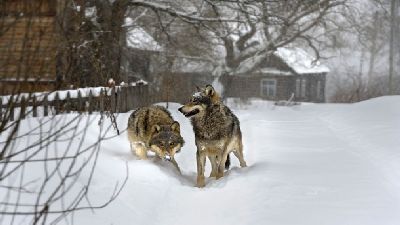Nature
Radioactive Wolves (30x1)
:
In 1986 a nuclear meltdown at the infamous Chernobyl power plant in present-day Ukraine left miles of land in radioactive ruins. Residents living in areas most contaminated by the disaster were evacuated and relocated by government order, and a no-man’s land of our own making was left to its own devices. In the ensuing 25 years, forests, marshes, fields and rivers reclaimed the land, reversing the effects of hundreds of years of human development. And surprisingly, this exclusion zone, or “dead zone,” has become a kind of post-nuclear Eden, populated by beaver and bison, horses and birds, fish and falcons – and ruled by wolves.
Access to the zone is now permitted, at least on a limited basis, and scientists are monitoring the surviving wildlife in the area, trying to learn how the various species are coping with the invisible blight of radiation. As the top predators in this new wilderness, wolves best reflect the condition of the entire ecosystem because if the wolves are doing well, the populations of their prey must also be doing well. Accordingly, a key long-term study of the wolves has been initiated to determine their health, their range, and their numbers.
Radioactive Wolves examines the state of wildlife populations in Chernobyl’s exclusion zone, an area that, to this day, remains too radioactive for human habitation.
